AUCTORES
Globalize your Research
Short communication | DOI: https://doi.org/10.31579/2690-1897/244
Grodno State Medical University, Gorkogo St, Grodno, Republic of Belarus.
*Corresponding Author: Elizaveta I Bon, Candidate of biological science, Assistant professor of pathophysiology department named D. A. Maslakov, Grodno State Medical University; Grodno State Medical University, 80 Gorky St,230009, Grodno, Belarus.
Citation: Bon E.I., Maksimovich N.Ye., Novak A.A, (2025), Reversibility of Adaptation, Phenomena of Physiological and Pathological Maladaptation, J, Surgical Case Reports and Images, 8(3); DOI:10.31579/2690-1897/244
Copyright: © 2025, Bon E.I. This is an open access article distributed under the Creative Commons Attribution License, which permits unrestricted use, distribution, and reproduction in any medium, provided the original work is properly cited.
Received: 07 February 2025 | Accepted: 24 February 2025 | Published: 10 March 2025
Keywords: adaptation; physiological maladaptation; pathological maladaptation
The possibility of a reverse development of the process of long-term adaptation is expressed in the gradual disappearance of adaptation to physical exertion, hypoxia, and chemical factors after the cessation of these factors. It has been shown that at this time there is a rather rapid disappearance of the systemic structural trace that forms the basis of each of these adaptation options (a decrease in skeletal muscle mass, the number of mitochondria in them, a decrease in lung and heart muscle mass after cessation of physical exertion, a decrease in the mass of the right ventricle of the heart and the gradual disappearance of polycythemia after the body leaves hypoxia, a decrease in activity of the microsomal oxidation system and liver mass after discontinuation of the administration of poisons).
The possibility of a reverse development of the process of long-term adaptation is expressed in the gradual disappearance of adaptation to physical exertion, hypoxia, and chemical factors after the cessation of these factors. It has been shown that at this time there is a rather rapid disappearance of the systemic structural trace that forms the basis of each of these adaptation options (a decrease in skeletal muscle mass, the number of mitochondria in them, a decrease in lung and heart muscle mass after cessation of physical exertion, a decrease in the mass of the right ventricle of the heart and the gradual disappearance of polycythemia after the body leaves hypoxia, a decrease in activity of the microsomal oxidation system and liver mass after discontinuation of the administration of poisons). The mechanism of this phenomenon is that immediately after a sharp decrease in the load on any of the organs forming the functional system responsible for adaptation, there is a sharp drop in RNA synthesis and a decrease in the number of polysomes. As a result, protein synthesis in the organ decreases and begins to lag behind its decay — the mass of organ structures decreases. Thus, in experiments after a 45-day pressure chamber adaptation at an "altitude" of 7000 m, rats showed a 42% increase in the weight of the ventricles of the heart, and protein synthesis in the heart by the inclusion of labeled amino acids was increased by 20%. 3 days after the cessation of hypoxic effects, the weight of the ventricles remained increased by 40%, and the intensity of protein synthesis decreased to the control level. On the 7th and 15th days of readaptation, the weight of the ventricles was increased by 35 and 10%, respectively, and protein synthesis in the heart during these periods was reduced by 40 and 30%, respectively, compared with the control. On the 30th day of readaptation, ventricular weight and protein synthesis in the heart were at the control level [1]. In another laboratory study, the mass of the right ventricle of the heart and the RNA content in the myocardium of this ventricle were determined at various times after the termination of 20-day pressure chamber adaptation of rats at an "altitude" of 6000 m. After the end of the course of exposure, hypertrophy of the right ventricle and an increase in its RNA content were observed. By the 10th day of deadaptation, 54% of hypertrophy and 57% of adaptive RNA growth had been lost. After 20 days, 81% of hypertrophy was lost, and the RNA content returned to normal levels. 40 days after the cessation of hypoxic effects, the mass of the right ventricle and the RNA content in it did not differ from the control [2]. Approximately the same rate of reverse development of the systemic structural trace of adaptation has been demonstrated in studies of other laboratories. Thus, in experiments, hypertrophy of the left ventricle of the heart was caused by narrowing of the ascending aorta in rats. 28 days after surgery, the mass of the left ventricle and its RNA content were increased by about 50%. After that, cardiac hyperfunction was abruptly stopped by removing the ring that narrows the aorta. The mass of the ventricle and the RNA content in it decreased steeply in the next three days, then they decreased more slowly and after 20 days did not differ from the control. This kind of reversibility has been proven at the present time and after the long-term existence of compensatory devices in humans. Thus, the large hypertrophy of the left ventricle of the human heart caused by aortic valve disease undergoes a complete reverse development within the next year after a successful surgical operation that eliminated the defect by transplanting new valves. At the same time, the mass of the ventricle decreased by about 90 g and the disorders of contractile function observed with severe hypertrophy were eliminated [3]. These facts indicate that a decrease in the synthesis of nucleic acids and proteins plays an important role in the reverse development of the adaptive structural trace. The question of the possible role in this process of mechanisms responsible for the destruction of cellular structures, such as lysosomal enzymes or lipid peroxidation products, is currently the subject of research. In relation to the heart, it has been shown that the reverse development of hypertrophy caused by narrowing of the aorta is not accompanied by activation of lysosomal enzymes, and the reverse development of hypertrophy caused by the administration of thyroxine is accompanied by such activation. For another adaptive structural trace, namely, an increase in the power of the microsomal oxidation system that occurs when a poison is introduced into the body, it has been shown that membrane lipid peroxidation plays a role in its reverse development. Thus, the increase in the power of the microsomal oxidation system and the content of cytochrome P-450 in the liver caused by the administration of 20-methyl-holontren undergoes a reverse development after the cessation of the administration of this carcinogen. In the process of reverse development, i.e. During the breakdown of excess cytochrome P-450 and the disassembly of the sarcoplasmic reticulum membranes that have become redundant, activation of lipid peroxidation of the membranes and the action of lipid hydroperoxides on these structures play an important role [2]. Thus, a decrease in the intensity of protein synthesis and, possibly, the activation of structural degradation mechanisms rather quickly lead to the reverse development of the adaptive trace.
There is also evidence that, in addition to the factors just mentioned, the genetically determined instability of proteins formed during adaptation to proteolytic enzymes can play an important role in eliminating the adaptive structural trace. Thus, during stress or under the influence of externally administered glucocorticoids, the liver activates the synthesis of gluconeogenesis enzymes, which ensure the transformation of the body's structural resources into energy resources necessary in an extreme situation. After the extreme situation has passed, such a transformation becomes at least unnecessary and, moreover, prevents the restoration of lost structures and the development of reparative processes. Accordingly, when studying one of the enzymes of tyrosine transferase (TAT) neoglucogenesis, it turned out that in the first 5 hours after the introduction of hydrocortisone, its activity increases 10-fold, and in the next 10-15 hours it manages to decrease again to a normal level. TAT is represented in the liver by so-called A-isozymes, which move towards the anode during electrophoresis, and K-isozymes, which shift towards the cathode under the same conditions. These isozymes are encoded in various cistrons of the liver cell genome. Under the influence of glucocorticoids, cistrons encoding exclusively A-isozymes are activated, respectively, an adaptive increase in A-isozyme biosynthesis becomes the basis for an overall increase in TAT activity under stress. This isozyme is disproportionately less resistant to the action of proteolytic enzymes than isozyme K; it is rapidly destroyed, and that is why the activity of TAT decreases rapidly, returning to its initial level in a timely manner. A completely similar situation has been proven for adaptive insulin-induced activation of hexokinase biosynthesis and other enzymes. Thus, it seems that we are talking about a general pattern, which consists in the fact that an organism genetically determines not only the possibility of structural changes forming the basis of adaptation, but also the timely reverse development of these changes. There are at least three types of molecular mechanisms responsible for the reverse development of the systemic structural trace, namely: decreased synthesis of RNA and proteins, activation of specialized mechanisms of structural breakdown, and genetically determined instability of structures formed during adaptation to natural degradation mechanisms. The existence of various mechanisms that duplicate each other to varying degrees, "erasing" the systemic structural trace and ensuring the reverse development of adaptation, indicates the great biological significance of this process. Indeed, the reverse development of adaptation, or deadaptation, is an expression of the body's remarkable ability to eliminate unused structures. This is a necessary prerequisite for the use of released structural resources in other body systems and, thus, a prerequisite for transitions from one adaptation to another under the influence of the environment [4].Considering readaptation as a physiological process, and its high rate as a prerequisite for the formation of new long-term adaptive reactions in the body, it should be borne in mind that the organism of higher animals is evolutionarily determined to live in a relatively permanent environment, to which it gradually adapts. This is probably why the rate of de-adaptation is only relatively high compared to the initial state, but at the same time it is less than the rate of adaptation development. This important circumstance is the basis for the accumulation of adaptive changes under periodic, sometimes not too frequent environmental influences, the traces of each of which do not disappear completely and, combining with each other, form the basis of a gradually developing adaptation [5]. It is important to emphasize here that the process of disappearance of the adaptive structural trace at its final stage is slower than at the beginning; often in a latent form, adaptive traces persist in the body for a very long time. This phenomenon is most clearly expressed for higher long-term adaptive reactions based on brain memory; in this area, the "revival" of long-unused skills, "forgotten" foreign languages, etc. is well known. The higher stability of adaptive structural traces fixed in the brain compared to traces of simpler adaptive reactions is manifested, in particular, in the fact that during the process of readaptation, after complete cessation of physical exertion, the body's aerobic capacity and associated endurance gradually disappear, and special skills — the ability to perform a certain exercise — persist for quite a long time. and they can often be demonstrated by an already well-trained person. The process of disappearance of the structural trace of adaptation and adaptation itself with a return to the conditional norm corresponding to the given type and period of ontogenesis, in essence, cannot be designated otherwise than physiological readaptation. This readaptation should be distinguished from the situation caused by special conditions of hypokinesia and weightlessness, in which the process begins in a normal organism and leads to an unusual decrease in the mass and power of key cell structures, a decrease in the efficiency of entire functional systems against the norm. Such a deadaptation is an obvious prerequisite for many diseases and, apparently, can be designated as pathological deadaptation[6]. Pathological maladaptation develops on the basis of the same molecular mechanisms as physiological maladaptation, but its quantitative result significantly reduces the functional capabilities of organs and systems. This is especially convincingly demonstrated in relation to the lack of adaptation to physical exertion resulting from prolonged hypokinesia. In accordance with the developed idea of the crucial role of the relationship between function and the genetic apparatus in the mechanism of adaptation and readaptation, the essence of phenomena in hypokinesia is that reducing the load on the functional system responsible for the body's motor reactions, and in particular on the heart and skeletal muscles, reduces the function of the cells forming this system. In response, the activity of various transcriptons of the genetic apparatus of cells decreases by no means to the same extent. The activity of transcriptons encoding short-lived proteins decreases to the greatest extent, and as a result, selective atrophy of short-lived membrane structures of cells responsible for the reception of mediators and hormones, ion transport and energy supply develops. Since these structures make up only a small part of the cell mass, but are a necessary part of the cell's vital activity, hypokinesia at a certain stage of its development may be characterized by a relatively small decrease in mass and a sharp drop in the functional capabilities of the heart and skeletal muscles. In other words, during de-adaptation, the following should be observed: a relatively small atrophy of cardiac and skeletal muscles; a sharp decrease in the mass of sarcolemmal, sarcoplasmic, and to a lesser extent mitochondrial membranes in muscle cells; a significant decrease in muscle functionality[7]. This suggests that an adaptive increase in the capacity of organs and systems can indeed be provided by a genetically determined increase in the mass of predominantly short—lived cellular structures, while the decrease in the capacity of organs and systems during pathological readaptation is based on the opposite situation - selective atrophy of short-lived cell membrane structures. It must be borne in mind that the prerequisite for the disease may be not only a deep, obviously pathological maladaptation. There may be situations when the process of physiological readaptation acquires a certain role in the development of pathological conditions. One of the situations of this kind is observed when an organism, adapted to a certain factor or set of factors throughout its life, changes its living conditions at a late stage of ontogenesis and loses the systemic structural trace that forms the basis of adaptation. When trying to return to the previous living conditions, i.e. To implement the adaptation, it turns out to be necessary to restore the previous systemic structural trace by activating the synthesis of nucleic acids and proteins. However, under aging conditions, the activity of the genetic apparatus of differentiated cells and, consequently, the renewal of structures are reduced — the body cannot build all the necessary structures, and the "structural cost" of adaptation turns out to be too high. This kind of situation underlies many cases of chronic altitude sickness, which develops in elderly mountaineers of the Peruvian Andes when they return to an altitude of 4,000 m after a stay on the plain. This disease is manifested by a decrease in external respiration — hypoventilation and compensatory mobilization of hematopoiesis and blood circulation. When studying the mechanism of hypoventilation, it turned out that patients with chronic altitude sickness have a reduced degree of hyperventilation that occurs in response to the introduction of carbon dioxide, i.e., the sensitivity of the respiratory center to CO2 is reduced. Based on this, it can be assumed that the wear of the neurons of the respiratory center is the main mechanism of chronic altitude sickness. When adapting to hypoxia, the respiratory center performs moderate but continuous hyperfunction and is the target of hypoxemia. Both of these factors can activate the genetic apparatus of neurons through energy deficiency and cause activation of the synthesis of nucleic acids and proteins there. This increase in synthesis is apparently not infinite, since repeated activation of the genetic apparatus of a wide variety of differentiated cells, including neurons, may result in the exhaustion of their ability to synthesize RNA and proteins, i.e. depletion [8]. Such local deterioration of differentiated cells, which carry out prolonged hyperfunction, forms the basis of a number of diseases. One can imagine that this deterioration is most likely when the activation of the genetic apparatus necessary for the restoration of the structural basis of adaptation is repeated many times and occurs under aging conditions. Thus, it is in old age that the loss of long-term adaptation, which may be necessary in the future, poses the greatest risk. Maintaining the structural foundations of the necessary adaptation in the future by relatively small periodic loads on a responsible functional system is a disproportionately more economical process option than repeated cycles of readaptation - readaptation, since each such cycle has a fairly high structural cost. In summary, it should be emphasized that the process of deadaptation is an expression of the reversibility of any long-term adaptation, is a necessary prerequisite for the formation of new adaptive reactions of the body and changes in the entire phenotype in accordance with the requirements of the environment. This process is ensured by reducing the systemic structural trace of adaptation by reducing the synthesis of nucleic acids and proteins based on the mechanism of the relationship between the function and the genetic apparatus of cells forming the functional system responsible for adaptation, as well as due to the above-discussed molecular mechanisms of accelerated degradation of structures. In this case, the short-lived membrane structures of the cell are atrophied first and to the greatest extent, the increased capacity of which is the essence of adaptation and adaptive increase in functionality. With physiological readaptation, this process ensures that the body returns from adaptation to a certain conditional norm, and with further progression it leads to selective atrophy of key cell structures, profound functional impairment, and can be designated as pathological readaptation. Thus, deadaptation, as well as adaptation, has only relative biological expediency.
Clearly Auctoresonline and particularly Psychology and Mental Health Care Journal is dedicated to improving health care services for individuals and populations. The editorial boards' ability to efficiently recognize and share the global importance of health literacy with a variety of stakeholders. Auctoresonline publishing platform can be used to facilitate of optimal client-based services and should be added to health care professionals' repertoire of evidence-based health care resources.

Journal of Clinical Cardiology and Cardiovascular Intervention The submission and review process was adequate. However I think that the publication total value should have been enlightened in early fases. Thank you for all.

Journal of Women Health Care and Issues By the present mail, I want to say thank to you and tour colleagues for facilitating my published article. Specially thank you for the peer review process, support from the editorial office. I appreciate positively the quality of your journal.
Journal of Clinical Research and Reports I would be very delighted to submit my testimonial regarding the reviewer board and the editorial office. The reviewer board were accurate and helpful regarding any modifications for my manuscript. And the editorial office were very helpful and supportive in contacting and monitoring with any update and offering help. It was my pleasure to contribute with your promising Journal and I am looking forward for more collaboration.

We would like to thank the Journal of Thoracic Disease and Cardiothoracic Surgery because of the services they provided us for our articles. The peer-review process was done in a very excellent time manner, and the opinions of the reviewers helped us to improve our manuscript further. The editorial office had an outstanding correspondence with us and guided us in many ways. During a hard time of the pandemic that is affecting every one of us tremendously, the editorial office helped us make everything easier for publishing scientific work. Hope for a more scientific relationship with your Journal.

The peer-review process which consisted high quality queries on the paper. I did answer six reviewers’ questions and comments before the paper was accepted. The support from the editorial office is excellent.

Journal of Neuroscience and Neurological Surgery. I had the experience of publishing a research article recently. The whole process was simple from submission to publication. The reviewers made specific and valuable recommendations and corrections that improved the quality of my publication. I strongly recommend this Journal.

Dr. Katarzyna Byczkowska My testimonial covering: "The peer review process is quick and effective. The support from the editorial office is very professional and friendly. Quality of the Clinical Cardiology and Cardiovascular Interventions is scientific and publishes ground-breaking research on cardiology that is useful for other professionals in the field.

Thank you most sincerely, with regard to the support you have given in relation to the reviewing process and the processing of my article entitled "Large Cell Neuroendocrine Carcinoma of The Prostate Gland: A Review and Update" for publication in your esteemed Journal, Journal of Cancer Research and Cellular Therapeutics". The editorial team has been very supportive.

Testimony of Journal of Clinical Otorhinolaryngology: work with your Reviews has been a educational and constructive experience. The editorial office were very helpful and supportive. It was a pleasure to contribute to your Journal.

Dr. Bernard Terkimbi Utoo, I am happy to publish my scientific work in Journal of Women Health Care and Issues (JWHCI). The manuscript submission was seamless and peer review process was top notch. I was amazed that 4 reviewers worked on the manuscript which made it a highly technical, standard and excellent quality paper. I appreciate the format and consideration for the APC as well as the speed of publication. It is my pleasure to continue with this scientific relationship with the esteem JWHCI.

This is an acknowledgment for peer reviewers, editorial board of Journal of Clinical Research and Reports. They show a lot of consideration for us as publishers for our research article “Evaluation of the different factors associated with side effects of COVID-19 vaccination on medical students, Mutah university, Al-Karak, Jordan”, in a very professional and easy way. This journal is one of outstanding medical journal.
Dear Hao Jiang, to Journal of Nutrition and Food Processing We greatly appreciate the efficient, professional and rapid processing of our paper by your team. If there is anything else we should do, please do not hesitate to let us know. On behalf of my co-authors, we would like to express our great appreciation to editor and reviewers.

As an author who has recently published in the journal "Brain and Neurological Disorders". I am delighted to provide a testimonial on the peer review process, editorial office support, and the overall quality of the journal. The peer review process at Brain and Neurological Disorders is rigorous and meticulous, ensuring that only high-quality, evidence-based research is published. The reviewers are experts in their fields, and their comments and suggestions were constructive and helped improve the quality of my manuscript. The review process was timely and efficient, with clear communication from the editorial office at each stage. The support from the editorial office was exceptional throughout the entire process. The editorial staff was responsive, professional, and always willing to help. They provided valuable guidance on formatting, structure, and ethical considerations, making the submission process seamless. Moreover, they kept me informed about the status of my manuscript and provided timely updates, which made the process less stressful. The journal Brain and Neurological Disorders is of the highest quality, with a strong focus on publishing cutting-edge research in the field of neurology. The articles published in this journal are well-researched, rigorously peer-reviewed, and written by experts in the field. The journal maintains high standards, ensuring that readers are provided with the most up-to-date and reliable information on brain and neurological disorders. In conclusion, I had a wonderful experience publishing in Brain and Neurological Disorders. The peer review process was thorough, the editorial office provided exceptional support, and the journal's quality is second to none. I would highly recommend this journal to any researcher working in the field of neurology and brain disorders.

Dear Agrippa Hilda, Journal of Neuroscience and Neurological Surgery, Editorial Coordinator, I trust this message finds you well. I want to extend my appreciation for considering my article for publication in your esteemed journal. I am pleased to provide a testimonial regarding the peer review process and the support received from your editorial office. The peer review process for my paper was carried out in a highly professional and thorough manner. The feedback and comments provided by the authors were constructive and very useful in improving the quality of the manuscript. This rigorous assessment process undoubtedly contributes to the high standards maintained by your journal.

International Journal of Clinical Case Reports and Reviews. I strongly recommend to consider submitting your work to this high-quality journal. The support and availability of the Editorial staff is outstanding and the review process was both efficient and rigorous.

Thank you very much for publishing my Research Article titled “Comparing Treatment Outcome Of Allergic Rhinitis Patients After Using Fluticasone Nasal Spray And Nasal Douching" in the Journal of Clinical Otorhinolaryngology. As Medical Professionals we are immensely benefited from study of various informative Articles and Papers published in this high quality Journal. I look forward to enriching my knowledge by regular study of the Journal and contribute my future work in the field of ENT through the Journal for use by the medical fraternity. The support from the Editorial office was excellent and very prompt. I also welcome the comments received from the readers of my Research Article.

Dear Erica Kelsey, Editorial Coordinator of Cancer Research and Cellular Therapeutics Our team is very satisfied with the processing of our paper by your journal. That was fast, efficient, rigorous, but without unnecessary complications. We appreciated the very short time between the submission of the paper and its publication on line on your site.

I am very glad to say that the peer review process is very successful and fast and support from the Editorial Office. Therefore, I would like to continue our scientific relationship for a long time. And I especially thank you for your kindly attention towards my article. Have a good day!

"We recently published an article entitled “Influence of beta-Cyclodextrins upon the Degradation of Carbofuran Derivatives under Alkaline Conditions" in the Journal of “Pesticides and Biofertilizers” to show that the cyclodextrins protect the carbamates increasing their half-life time in the presence of basic conditions This will be very helpful to understand carbofuran behaviour in the analytical, agro-environmental and food areas. We greatly appreciated the interaction with the editor and the editorial team; we were particularly well accompanied during the course of the revision process, since all various steps towards publication were short and without delay".

I would like to express my gratitude towards you process of article review and submission. I found this to be very fair and expedient. Your follow up has been excellent. I have many publications in national and international journal and your process has been one of the best so far. Keep up the great work.

We are grateful for this opportunity to provide a glowing recommendation to the Journal of Psychiatry and Psychotherapy. We found that the editorial team were very supportive, helpful, kept us abreast of timelines and over all very professional in nature. The peer review process was rigorous, efficient and constructive that really enhanced our article submission. The experience with this journal remains one of our best ever and we look forward to providing future submissions in the near future.

I am very pleased to serve as EBM of the journal, I hope many years of my experience in stem cells can help the journal from one way or another. As we know, stem cells hold great potential for regenerative medicine, which are mostly used to promote the repair response of diseased, dysfunctional or injured tissue using stem cells or their derivatives. I think Stem Cell Research and Therapeutics International is a great platform to publish and share the understanding towards the biology and translational or clinical application of stem cells.

I would like to give my testimony in the support I have got by the peer review process and to support the editorial office where they were of asset to support young author like me to be encouraged to publish their work in your respected journal and globalize and share knowledge across the globe. I really give my great gratitude to your journal and the peer review including the editorial office.

I am delighted to publish our manuscript entitled "A Perspective on Cocaine Induced Stroke - Its Mechanisms and Management" in the Journal of Neuroscience and Neurological Surgery. The peer review process, support from the editorial office, and quality of the journal are excellent. The manuscripts published are of high quality and of excellent scientific value. I recommend this journal very much to colleagues.
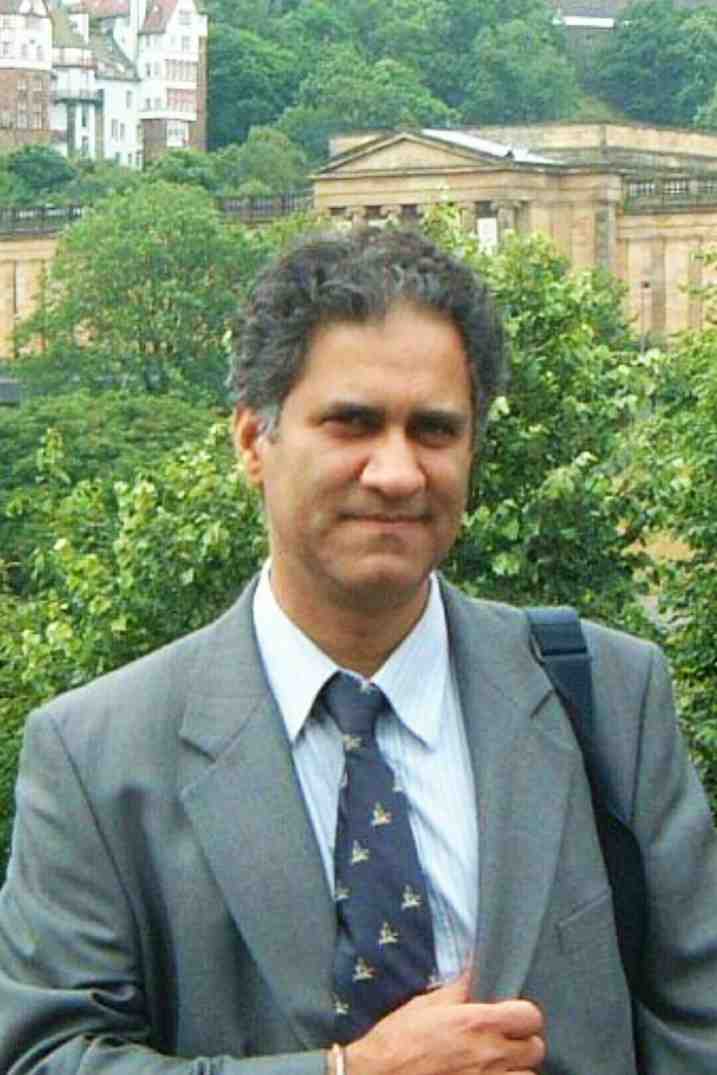
Dr.Tania Muñoz, My experience as researcher and author of a review article in The Journal Clinical Cardiology and Interventions has been very enriching and stimulating. The editorial team is excellent, performs its work with absolute responsibility and delivery. They are proactive, dynamic and receptive to all proposals. Supporting at all times the vast universe of authors who choose them as an option for publication. The team of review specialists, members of the editorial board, are brilliant professionals, with remarkable performance in medical research and scientific methodology. Together they form a frontline team that consolidates the JCCI as a magnificent option for the publication and review of high-level medical articles and broad collective interest. I am honored to be able to share my review article and open to receive all your comments.

“The peer review process of JPMHC is quick and effective. Authors are benefited by good and professional reviewers with huge experience in the field of psychology and mental health. The support from the editorial office is very professional. People to contact to are friendly and happy to help and assist any query authors might have. Quality of the Journal is scientific and publishes ground-breaking research on mental health that is useful for other professionals in the field”.

Dear editorial department: On behalf of our team, I hereby certify the reliability and superiority of the International Journal of Clinical Case Reports and Reviews in the peer review process, editorial support, and journal quality. Firstly, the peer review process of the International Journal of Clinical Case Reports and Reviews is rigorous, fair, transparent, fast, and of high quality. The editorial department invites experts from relevant fields as anonymous reviewers to review all submitted manuscripts. These experts have rich academic backgrounds and experience, and can accurately evaluate the academic quality, originality, and suitability of manuscripts. The editorial department is committed to ensuring the rigor of the peer review process, while also making every effort to ensure a fast review cycle to meet the needs of authors and the academic community. Secondly, the editorial team of the International Journal of Clinical Case Reports and Reviews is composed of a group of senior scholars and professionals with rich experience and professional knowledge in related fields. The editorial department is committed to assisting authors in improving their manuscripts, ensuring their academic accuracy, clarity, and completeness. Editors actively collaborate with authors, providing useful suggestions and feedback to promote the improvement and development of the manuscript. We believe that the support of the editorial department is one of the key factors in ensuring the quality of the journal. Finally, the International Journal of Clinical Case Reports and Reviews is renowned for its high- quality articles and strict academic standards. The editorial department is committed to publishing innovative and academically valuable research results to promote the development and progress of related fields. The International Journal of Clinical Case Reports and Reviews is reasonably priced and ensures excellent service and quality ratio, allowing authors to obtain high-level academic publishing opportunities in an affordable manner. I hereby solemnly declare that the International Journal of Clinical Case Reports and Reviews has a high level of credibility and superiority in terms of peer review process, editorial support, reasonable fees, and journal quality. Sincerely, Rui Tao.

Clinical Cardiology and Cardiovascular Interventions I testity the covering of the peer review process, support from the editorial office, and quality of the journal.

Clinical Cardiology and Cardiovascular Interventions, we deeply appreciate the interest shown in our work and its publication. It has been a true pleasure to collaborate with you. The peer review process, as well as the support provided by the editorial office, have been exceptional, and the quality of the journal is very high, which was a determining factor in our decision to publish with you.
The peer reviewers process is quick and effective, the supports from editorial office is excellent, the quality of journal is high. I would like to collabroate with Internatioanl journal of Clinical Case Reports and Reviews journal clinically in the future time.
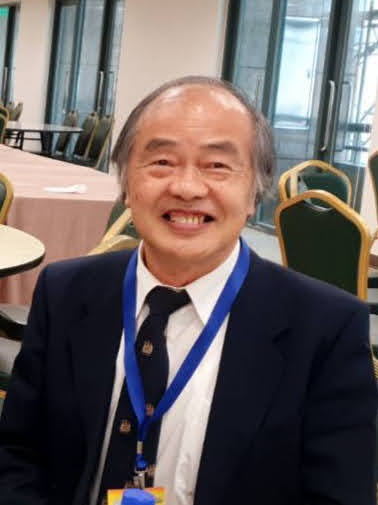
Clinical Cardiology and Cardiovascular Interventions, I would like to express my sincerest gratitude for the trust placed in our team for the publication in your journal. It has been a true pleasure to collaborate with you on this project. I am pleased to inform you that both the peer review process and the attention from the editorial coordination have been excellent. Your team has worked with dedication and professionalism to ensure that your publication meets the highest standards of quality. We are confident that this collaboration will result in mutual success, and we are eager to see the fruits of this shared effort.

Dear Dr. Jessica Magne, Editorial Coordinator 0f Clinical Cardiology and Cardiovascular Interventions, I hope this message finds you well. I want to express my utmost gratitude for your excellent work and for the dedication and speed in the publication process of my article titled "Navigating Innovation: Qualitative Insights on Using Technology for Health Education in Acute Coronary Syndrome Patients." I am very satisfied with the peer review process, the support from the editorial office, and the quality of the journal. I hope we can maintain our scientific relationship in the long term.
Dear Monica Gissare, - Editorial Coordinator of Nutrition and Food Processing. ¨My testimony with you is truly professional, with a positive response regarding the follow-up of the article and its review, you took into account my qualities and the importance of the topic¨.

Dear Dr. Jessica Magne, Editorial Coordinator 0f Clinical Cardiology and Cardiovascular Interventions, The review process for the article “The Handling of Anti-aggregants and Anticoagulants in the Oncologic Heart Patient Submitted to Surgery” was extremely rigorous and detailed. From the initial submission to the final acceptance, the editorial team at the “Journal of Clinical Cardiology and Cardiovascular Interventions” demonstrated a high level of professionalism and dedication. The reviewers provided constructive and detailed feedback, which was essential for improving the quality of our work. Communication was always clear and efficient, ensuring that all our questions were promptly addressed. The quality of the “Journal of Clinical Cardiology and Cardiovascular Interventions” is undeniable. It is a peer-reviewed, open-access publication dedicated exclusively to disseminating high-quality research in the field of clinical cardiology and cardiovascular interventions. The journal's impact factor is currently under evaluation, and it is indexed in reputable databases, which further reinforces its credibility and relevance in the scientific field. I highly recommend this journal to researchers looking for a reputable platform to publish their studies.

Dear Editorial Coordinator of the Journal of Nutrition and Food Processing! "I would like to thank the Journal of Nutrition and Food Processing for including and publishing my article. The peer review process was very quick, movement and precise. The Editorial Board has done an extremely conscientious job with much help, valuable comments and advices. I find the journal very valuable from a professional point of view, thank you very much for allowing me to be part of it and I would like to participate in the future!”

Dealing with The Journal of Neurology and Neurological Surgery was very smooth and comprehensive. The office staff took time to address my needs and the response from editors and the office was prompt and fair. I certainly hope to publish with this journal again.Their professionalism is apparent and more than satisfactory. Susan Weiner

My Testimonial Covering as fellowing: Lin-Show Chin. The peer reviewers process is quick and effective, the supports from editorial office is excellent, the quality of journal is high. I would like to collabroate with Internatioanl journal of Clinical Case Reports and Reviews.
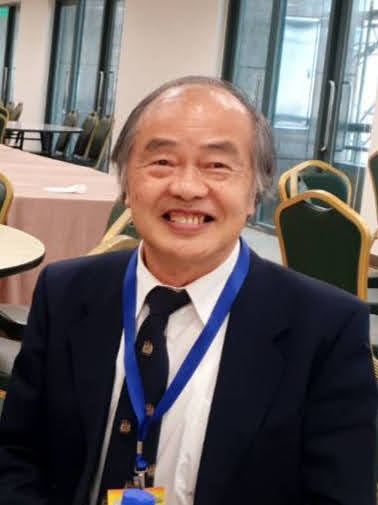
My experience publishing in Psychology and Mental Health Care was exceptional. The peer review process was rigorous and constructive, with reviewers providing valuable insights that helped enhance the quality of our work. The editorial team was highly supportive and responsive, making the submission process smooth and efficient. The journal's commitment to high standards and academic rigor makes it a respected platform for quality research. I am grateful for the opportunity to publish in such a reputable journal.
My experience publishing in International Journal of Clinical Case Reports and Reviews was exceptional. I Come forth to Provide a Testimonial Covering the Peer Review Process and the editorial office for the Professional and Impartial Evaluation of the Manuscript.

I would like to offer my testimony in the support. I have received through the peer review process and support the editorial office where they are to support young authors like me, encourage them to publish their work in your esteemed journals, and globalize and share knowledge globally. I really appreciate your journal, peer review, and editorial office.
Dear Agrippa Hilda- Editorial Coordinator of Journal of Neuroscience and Neurological Surgery, "The peer review process was very quick and of high quality, which can also be seen in the articles in the journal. The collaboration with the editorial office was very good."

I would like to express my sincere gratitude for the support and efficiency provided by the editorial office throughout the publication process of my article, “Delayed Vulvar Metastases from Rectal Carcinoma: A Case Report.” I greatly appreciate the assistance and guidance I received from your team, which made the entire process smooth and efficient. The peer review process was thorough and constructive, contributing to the overall quality of the final article. I am very grateful for the high level of professionalism and commitment shown by the editorial staff, and I look forward to maintaining a long-term collaboration with the International Journal of Clinical Case Reports and Reviews.
To Dear Erin Aust, I would like to express my heartfelt appreciation for the opportunity to have my work published in this esteemed journal. The entire publication process was smooth and well-organized, and I am extremely satisfied with the final result. The Editorial Team demonstrated the utmost professionalism, providing prompt and insightful feedback throughout the review process. Their clear communication and constructive suggestions were invaluable in enhancing my manuscript, and their meticulous attention to detail and dedication to quality are truly commendable. Additionally, the support from the Editorial Office was exceptional. From the initial submission to the final publication, I was guided through every step of the process with great care and professionalism. The team's responsiveness and assistance made the entire experience both easy and stress-free. I am also deeply impressed by the quality and reputation of the journal. It is an honor to have my research featured in such a respected publication, and I am confident that it will make a meaningful contribution to the field.

"I am grateful for the opportunity of contributing to [International Journal of Clinical Case Reports and Reviews] and for the rigorous review process that enhances the quality of research published in your esteemed journal. I sincerely appreciate the time and effort of your team who have dedicatedly helped me in improvising changes and modifying my manuscript. The insightful comments and constructive feedback provided have been invaluable in refining and strengthening my work".

I thank the ‘Journal of Clinical Research and Reports’ for accepting this article for publication. This is a rigorously peer reviewed journal which is on all major global scientific data bases. I note the review process was prompt, thorough and professionally critical. It gave us an insight into a number of important scientific/statistical issues. The review prompted us to review the relevant literature again and look at the limitations of the study. The peer reviewers were open, clear in the instructions and the editorial team was very prompt in their communication. This journal certainly publishes quality research articles. I would recommend the journal for any future publications.

Dear Jessica Magne, with gratitude for the joint work. Fast process of receiving and processing the submitted scientific materials in “Clinical Cardiology and Cardiovascular Interventions”. High level of competence of the editors with clear and correct recommendations and ideas for enriching the article.

We found the peer review process quick and positive in its input. The support from the editorial officer has been very agile, always with the intention of improving the article and taking into account our subsequent corrections.
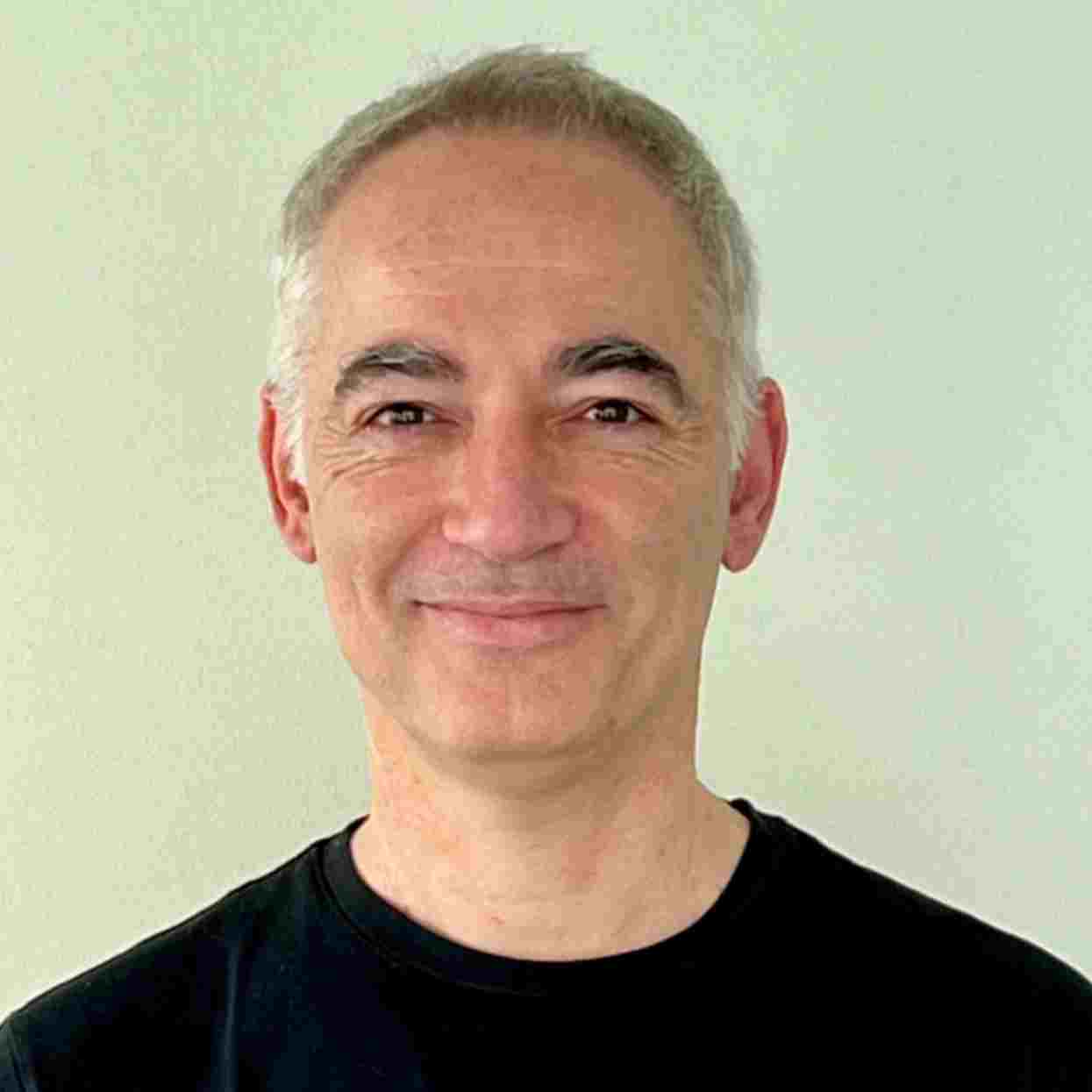
My article, titled 'No Way Out of the Smartphone Epidemic Without Considering the Insights of Brain Research,' has been republished in the International Journal of Clinical Case Reports and Reviews. The review process was seamless and professional, with the editors being both friendly and supportive. I am deeply grateful for their efforts.
To Dear Erin Aust – Editorial Coordinator of Journal of General Medicine and Clinical Practice! I declare that I am absolutely satisfied with your work carried out with great competence in following the manuscript during the various stages from its receipt, during the revision process to the final acceptance for publication. Thank Prof. Elvira Farina

Dear Jessica, and the super professional team of the ‘Clinical Cardiology and Cardiovascular Interventions’ I am sincerely grateful to the coordinated work of the journal team for the no problem with the submission of my manuscript: “Cardiometabolic Disorders in A Pregnant Woman with Severe Preeclampsia on the Background of Morbid Obesity (Case Report).” The review process by 5 experts was fast, and the comments were professional, which made it more specific and academic, and the process of publication and presentation of the article was excellent. I recommend that my colleagues publish articles in this journal, and I am interested in further scientific cooperation. Sincerely and best wishes, Dr. Oleg Golyanovskiy.
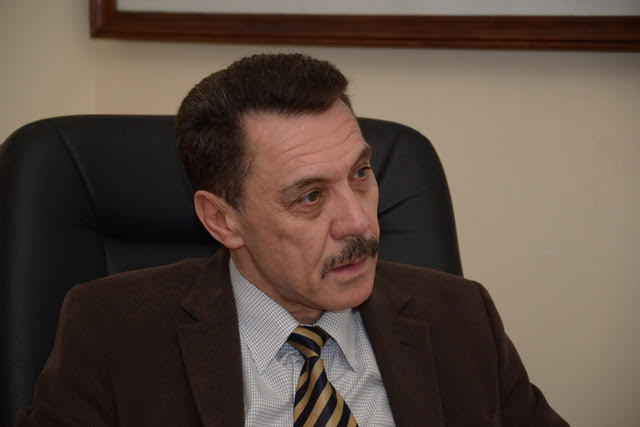
Dear Ashley Rosa, Editorial Coordinator of the journal - Psychology and Mental Health Care. " The process of obtaining publication of my article in the Psychology and Mental Health Journal was positive in all areas. The peer review process resulted in a number of valuable comments, the editorial process was collaborative and timely, and the quality of this journal has been quickly noticed, resulting in alternative journals contacting me to publish with them." Warm regards, Susan Anne Smith, PhD. Australian Breastfeeding Association.

Dear Jessica Magne, Editorial Coordinator, Clinical Cardiology and Cardiovascular Interventions, Auctores Publishing LLC. I appreciate the journal (JCCI) editorial office support, the entire team leads were always ready to help, not only on technical front but also on thorough process. Also, I should thank dear reviewers’ attention to detail and creative approach to teach me and bring new insights by their comments. Surely, more discussions and introduction of other hemodynamic devices would provide better prevention and management of shock states. Your efforts and dedication in presenting educational materials in this journal are commendable. Best wishes from, Farahnaz Fallahian.
Dear Maria Emerson, Editorial Coordinator, International Journal of Clinical Case Reports and Reviews, Auctores Publishing LLC. I am delighted to have published our manuscript, "Acute Colonic Pseudo-Obstruction (ACPO): A rare but serious complication following caesarean section." I want to thank the editorial team, especially Maria Emerson, for their prompt review of the manuscript, quick responses to queries, and overall support. Yours sincerely Dr. Victor Olagundoye.

Dear Ashley Rosa, Editorial Coordinator, International Journal of Clinical Case Reports and Reviews. Many thanks for publishing this manuscript after I lost confidence the editors were most helpful, more than other journals Best wishes from, Susan Anne Smith, PhD. Australian Breastfeeding Association.

Dear Agrippa Hilda, Editorial Coordinator, Journal of Neuroscience and Neurological Surgery. The entire process including article submission, review, revision, and publication was extremely easy. The journal editor was prompt and helpful, and the reviewers contributed to the quality of the paper. Thank you so much! Eric Nussbaum, MD
Dr Hala Al Shaikh This is to acknowledge that the peer review process for the article ’ A Novel Gnrh1 Gene Mutation in Four Omani Male Siblings, Presentation and Management ’ sent to the International Journal of Clinical Case Reports and Reviews was quick and smooth. The editorial office was prompt with easy communication.

Dear Erin Aust, Editorial Coordinator, Journal of General Medicine and Clinical Practice. We are pleased to share our experience with the “Journal of General Medicine and Clinical Practice”, following the successful publication of our article. The peer review process was thorough and constructive, helping to improve the clarity and quality of the manuscript. We are especially thankful to Ms. Erin Aust, the Editorial Coordinator, for her prompt communication and continuous support throughout the process. Her professionalism ensured a smooth and efficient publication experience. The journal upholds high editorial standards, and we highly recommend it to fellow researchers seeking a credible platform for their work. Best wishes By, Dr. Rakhi Mishra.

Dear Jessica Magne, Editorial Coordinator, Clinical Cardiology and Cardiovascular Interventions, Auctores Publishing LLC. The peer review process of the journal of Clinical Cardiology and Cardiovascular Interventions was excellent and fast, as was the support of the editorial office and the quality of the journal. Kind regards Walter F. Riesen Prof. Dr. Dr. h.c. Walter F. Riesen.

Dear Ashley Rosa, Editorial Coordinator, International Journal of Clinical Case Reports and Reviews, Auctores Publishing LLC. Thank you for publishing our article, Exploring Clozapine's Efficacy in Managing Aggression: A Multiple Single-Case Study in Forensic Psychiatry in the international journal of clinical case reports and reviews. We found the peer review process very professional and efficient. The comments were constructive, and the whole process was efficient. On behalf of the co-authors, I would like to thank you for publishing this article. With regards, Dr. Jelle R. Lettinga.

Dear Clarissa Eric, Editorial Coordinator, Journal of Clinical Case Reports and Studies, I would like to express my deep admiration for the exceptional professionalism demonstrated by your journal. I am thoroughly impressed by the speed of the editorial process, the substantive and insightful reviews, and the meticulous preparation of the manuscript for publication. Additionally, I greatly appreciate the courteous and immediate responses from your editorial office to all my inquiries. Best Regards, Dariusz Ziora

Dear Chrystine Mejia, Editorial Coordinator, Journal of Neurodegeneration and Neurorehabilitation, Auctores Publishing LLC, We would like to thank the editorial team for the smooth and high-quality communication leading up to the publication of our article in the Journal of Neurodegeneration and Neurorehabilitation. The reviewers have extensive knowledge in the field, and their relevant questions helped to add value to our publication. Kind regards, Dr. Ravi Shrivastava.

Dear Clarissa Eric, Editorial Coordinator, Journal of Clinical Case Reports and Studies, Auctores Publishing LLC, USA Office: +1-(302)-520-2644. I would like to express my sincere appreciation for the efficient and professional handling of my case report by the ‘Journal of Clinical Case Reports and Studies’. The peer review process was not only fast but also highly constructive—the reviewers’ comments were clear, relevant, and greatly helped me improve the quality and clarity of my manuscript. I also received excellent support from the editorial office throughout the process. Communication was smooth and timely, and I felt well guided at every stage, from submission to publication. The overall quality and rigor of the journal are truly commendable. I am pleased to have published my work with Journal of Clinical Case Reports and Studies, and I look forward to future opportunities for collaboration. Sincerely, Aline Tollet, UCLouvain.

Dear Ms. Mayra Duenas, Editorial Coordinator, International Journal of Clinical Case Reports and Reviews. “The International Journal of Clinical Case Reports and Reviews represented the “ideal house” to share with the research community a first experience with the use of the Simeox device for speech rehabilitation. High scientific reputation and attractive website communication were first determinants for the selection of this Journal, and the following submission process exceeded expectations: fast but highly professional peer review, great support by the editorial office, elegant graphic layout. Exactly what a dynamic research team - also composed by allied professionals - needs!" From, Chiara Beccaluva, PT - Italy.

Dear Maria Emerson, Editorial Coordinator, we have deeply appreciated the professionalism demonstrated by the International Journal of Clinical Case Reports and Reviews. The reviewers have extensive knowledge of our field and have been very efficient and fast in supporting the process. I am really looking forward to further collaboration. Thanks. Best regards, Dr. Claudio Ligresti
Dear Chrystine Mejia, Editorial Coordinator, Journal of Neurodegeneration and Neurorehabilitation. “The peer review process was efficient and constructive, and the editorial office provided excellent communication and support throughout. The journal ensures scientific rigor and high editorial standards, while also offering a smooth and timely publication process. We sincerely appreciate the work of the editorial team in facilitating the dissemination of innovative approaches such as the Bonori Method.” Best regards, Dr. Matteo Bonori.
